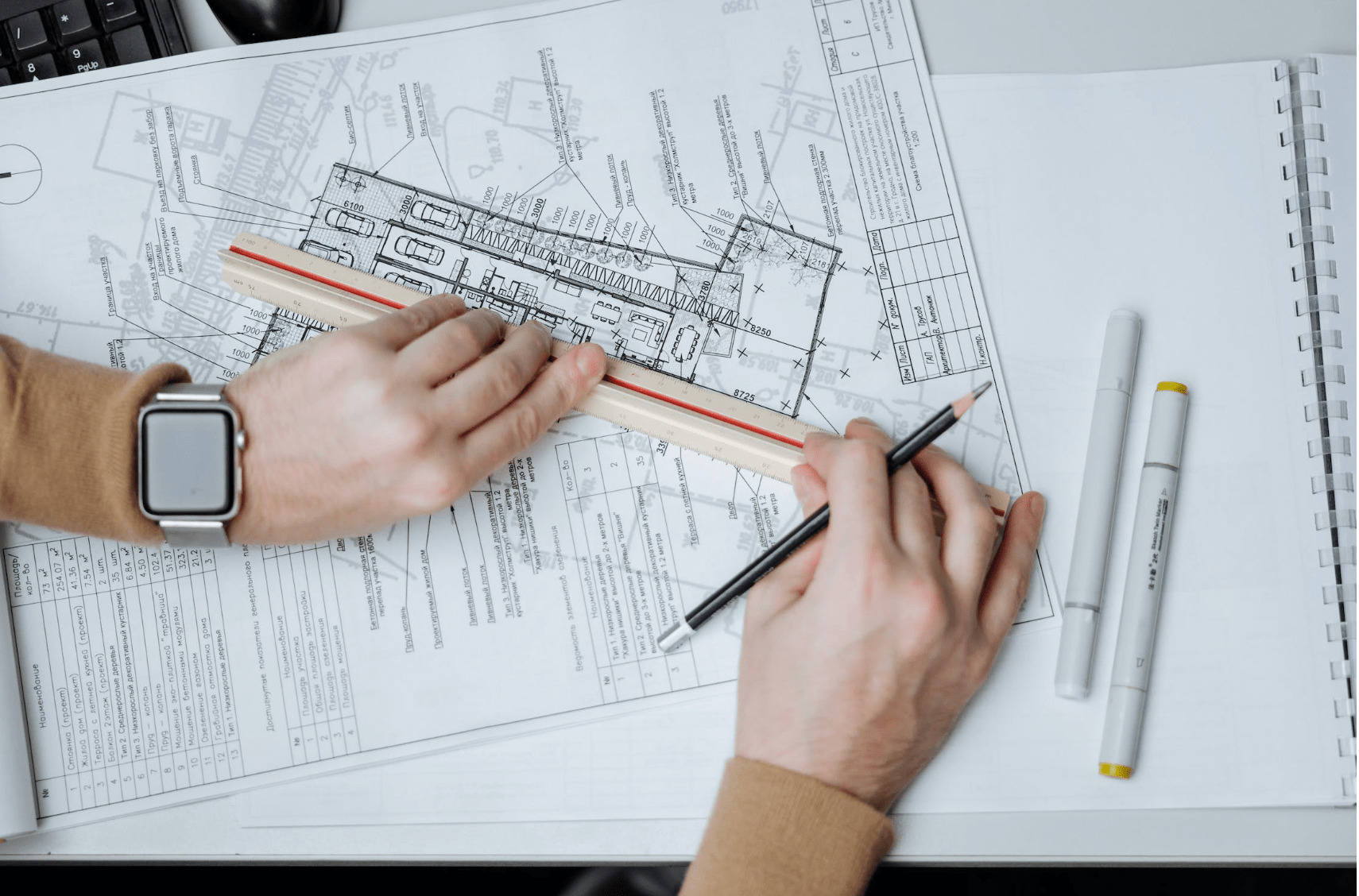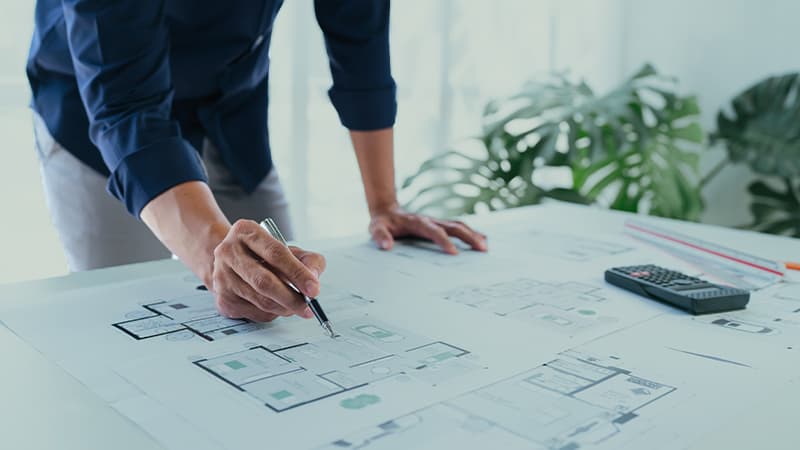Understanding the Diverse Career Paths Available for Aspiring Architect
As a hopeful Architect, you have a globe of occupation paths waiting for you. Whether you're attracted to traditional style or the subtleties of lasting design, there's a specific niche that aligns with your interests.
Typical Style: Creating Structures and structures
Conventional architecture concentrates on creating buildings and structures that mix capability with aesthetic allure. Your styles can mirror cultural heritage, showcasing regional customs while meeting modern-day needs.
You'll develop abilities in preparing, model-making, and website analysis, enabling you to visualize and interact your concepts efficiently. Engaging with customers, you'll need to understand their vision and equate it into viable designs.
Furthermore, developing codes and sustainability methods are necessary in your job, guaranteeing your structures are ecologically friendly and safe. As you expand in your career, you'll find opportunities in domestic, commercial, or perhaps remediation jobs, each offering special obstacles. Accepting traditional style paves the method for a satisfying career that admires the past while forming the future.
Urban Preparation: Forming Communities and Public Spaces
As an ambitious Architect, you can play an important function as a city organizer, changing exactly how areas function and communicate. By using neighborhood interaction strategies, you'll assure that locals have a voice fit their atmosphere. And also, incorporating lasting layout principles will certainly assist produce areas that not just satisfy today's demands however additionally safeguard the future.
Function of Urban Planners
While lots of could think about architects as the single dreamers behind buildings, city coordinators play an important function in shaping the broader landscape of neighborhoods and public areas. They examine land usage, zoning laws, and neighborhood requires to create sustainable environments that improve lifestyle. By working together with different stakeholders, you'll aid create parks, transport systems, and household locations that advertise social communication and ease of access. Urban coordinators likewise concentrate on ecological considerations, making sure that developments integrate green spaces and assistance biodiversity. Your competence in spatial layout and area dynamics permits you to envision future growth while maintaining social heritage. In this essential function, you'll straight affect how individuals experience their surroundings, making every job an opportunity for positive change.
Area Interaction Strategies
Reliable neighborhood involvement techniques are vital for metropolitan coordinators to assure that the voices of homeowners are heard and valued in the planning procedure. To cultivate significant discussion, you must prioritize open forums and workshops where area participants can share their concepts and issues. By actively paying attention and integrating responses, you'll create spaces that mirror the area's requirements, inevitably leading to more lasting and successful metropolitan atmospheres.
Lasting Layout Concepts
When creating urban spaces, incorporating sustainable design principles is vital for producing settings that thrive both ecologically and socially. You ought to start by concentrating on power performance, utilizing materials that lower waste and advertise recycling. Think about integrating green rooms, like yards and parks, to enhance biodiversity and boost air high quality. Promoting walkability and public transport can minimize reliance on automobiles, fostering a healthier neighborhood.
Designing with water preservation in mind is also essential-- think about rain gardens and absorptive surface areas to handle stormwater. Including community members during the planning procedure guarantees that the areas you create fulfill their demands and motivate social interaction. By embracing these principles, you'll add to vivid, sustainable city landscapes that profit every person.

Landscape Architecture: Creating Sustainable Outdoor Environments
As you explore landscape design, you'll discover vital style principles that create practical and beautiful exterior areas. Lasting practices play a crucial function in guaranteeing these environments prosper while lessening ecological impact. Plus, you'll find a selection of job possibilities that permit you to make an actual difference in just how individuals connect with nature.
Design Concepts in Landscape
Recognizing design principles in landscape style is essential for creating sustainable exterior settings that integrate with nature. You'll need to contemplate components like balance, range, and proportion to assure your layouts really feel natural and inviting. Integrating native plants not just boosts biodiversity yet additionally lowers water use, making your landscape resistant. Think of the flow of area and exactly how individuals interact with it; paths and seating locations must invite expedition and leisure. Furthermore, take notice of seasonal modifications, making with products that complement the surroundings year-round (Architect). By focusing on sustainability and aesthetic appeals, you can create outdoor rooms that enrich the neighborhood and promote health. Welcoming these principles will set a strong structure for your occupation in landscape design.
Lasting Practices Introduction
Sustainable practices in landscape style not just focus on appearances yet additionally focus on eco-friendly health and wellness and resource preservation. You can create areas that promote dirt health and wellness, such as exercising and using natural materials permaculture principles. Inevitably, these practices assure your styles benefit both individuals and the environment for years to come.
Job Opportunities Exploration
With a strong structure in sustainable techniques, landscape architecture supplies a range of career courses that enable you to make a meaningful effect on the atmosphere. You can work as a landscape developer, developing aesthetically pleasing and useful outside rooms, or focus on eco-friendly remediation, aiding to revive damaged ecological communities. Urban planners usually team up with landscape engineers to produce green areas in urban setups, enhancing city livability. If you're enthusiastic concerning education and learning, take into consideration ending up being a landscape style educator, inspiring future generations. Furthermore, you could work with nonprofits concentrated on environmental sustainability or participate in study to introduce brand-new techniques. Each path not just shapes attractive environments but also fosters a healthier world for future generations.
Lasting Style: Focusing on Eco-Friendly Practices
As you explore your career in style, welcoming environmentally friendly practices can establish you apart in an affordable area. Sustainable design concentrates on developing structures that reduce environmental influence while enhancing owner well-being. By including sustainable materials, energy-efficient systems, and sustainable structure methods, you'll add to a greener future.
Begin by acquiring expertise of environment-friendly accreditations like LEED or BREEAM, which can reinforce your qualifications. Think about how natural light, air flow, and thermal effectiveness can optimize style. Collaborate with engineers and ecological specialists to introduce services that reduce waste and conserve sources.
Don't neglect the relevance of community participation-- engaging regional stakeholders can motivate designs that integrate with the atmosphere. As customers increasingly focus on sustainability, your know-how in environmentally friendly techniques will not only bring in projects however additionally fulfill your enthusiasm for liable architecture. Accept this critical aspect of the occupation, and enjoy your profession grow.
Historical Preservation: Safeguarding and Bring Back Social Heritage
While you start on your building trip, take into consideration the important function of historical conservation in keeping our social heritage. This area concentrates on the defense and restoration of considerable buildings, websites, and structures that tell the tales of our past. By participating in historical conservation, you'll assist guard the building heritage that forms area identification.
As a historic preservation Architect, you'll evaluate historic relevance and evaluate the problem of frameworks. You'll work very closely with historians and conservationists to guarantee genuine reconstruction methods are employed. This occupation path enables you to her latest blog blend imagination with research, enabling you to make options that respect original products and craftsmanship.
Your job not just contributes to sustainability by recycling existing buildings however additionally fosters a feeling of satisfaction within communities. Welcoming this path will assist you become a guardian of history, maintaining the tales and appearances that enhance our lives.
Inside Style: Enhancing Indoor Spaces
Historic preservation and indoor style both share a dedication to improving the constructed environment, but they concentrate on various facets. While historic preservation highlights preserving a framework's social and historic value, interior style zeroes in on enhancing interior rooms for functionality and aesthetic appeals.
As an aspiring Architect, you'll find that indoor style allows you to blend imagination with technical skills. You'll create areas that not just look good yet likewise advertise comfort and performance. This field includes recognizing just how light, color, and materials connect within a room, impacting state of mind and usability.
You'll service various tasks, from household homes to industrial offices, making certain that each setting meets the requirements of its residents. By focusing on customer experience, you can transform insides into motivating and practical areas, making a considerable effect on just how people interact with their environments. Accept the opportunity to improve interior settings and shape the means people function and live.
Industrial Style: Merging Performance With Looks
Commercial layout plays an essential function in producing products that perfectly blend visual appeals with performance, guaranteeing that what you use everyday is not just aesthetically enticing however likewise useful. As a hopeful Architect, you might immerse on your own in helpful resources this field, concentrating on developing websites everything from furniture to customer electronic devices. Your job entails recognizing user requirements, products, and manufacturing procedures, enabling you to create innovative options that improve daily experiences.
In commercial style, you'll typically team up with online marketers, designers, and suppliers, making sure that your designs are not only stunning yet likewise feasible. This profession course provides a vibrant environment where imagination meets practicality, making it a rewarding selection for engineers interested in shaping the products of tomorrow.
Frequently Asked Concerns
What Educational Accreditations Do I Need to Come To Be an Architect?
To end up being an engineer, you'll need an expert level in architecture, generally a Bachelor's or Master's. Additionally, you'll have to complete a teaching fellowship and pass the Architect Enrollment Evaluation to practice lawfully.
Are There Accreditation Needs for Different Architectural Job Paths?
Yes, there're accreditation needs for various building paths. Architect. You'll need to pass examinations, full teaching fellowships, and occasionally pursue specialized training, depending on your chosen focus, like landscape style, city design, or historic preservation
What Software Application Abilities Are Essential for Designers Today?

Exactly How Can I Gain Practical Experience While Studying Architecture?
You can gain sensible experience by interning at building firms, taking part in design competitors, offering for neighborhood projects, or collaborating with schoolmates on real-world tasks. These chances enhance your abilities and develop important connections in the sector.
What Task Opportunities Exist Outside Typical Design Firms?
You can explore numerous task opportunities outside traditional style firms, like city planning, indoor style, landscape architecture, building and construction administration, actual estate advancement, or perhaps functions in sustainability consulting. Each offers special challenges and incentives.
Whether you're drawn to standard architecture or the subtleties of lasting style, there's a niche that lines up with your passions.When creating city spaces, incorporating sustainable layout principles is vital for creating atmospheres that grow both ecologically and socially.As you check out landscape style, you'll discover necessary layout principles that produce beautiful and functional outdoor areas.Recognizing layout principles in landscape design is necessary for creating sustainable outdoor environments that balance with nature.In commercial design, you'll commonly team up with marketing professionals, designers, and makers, making certain that your layouts are not just lovely yet additionally practical.